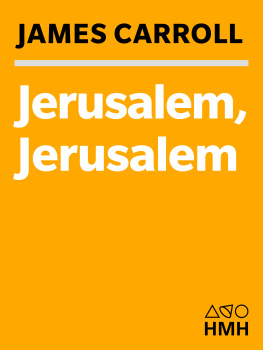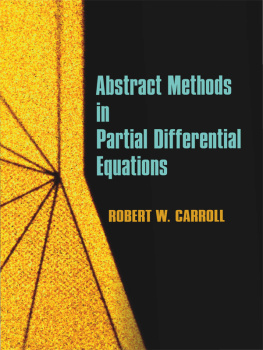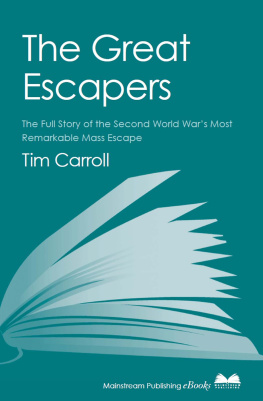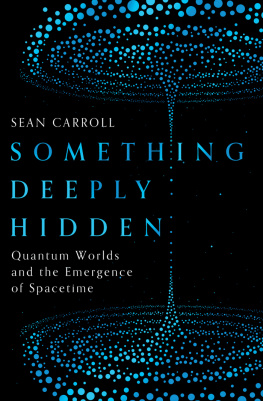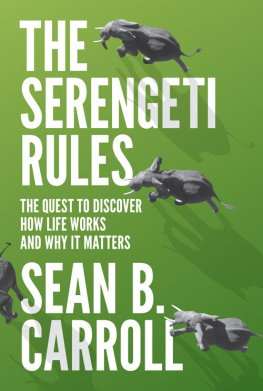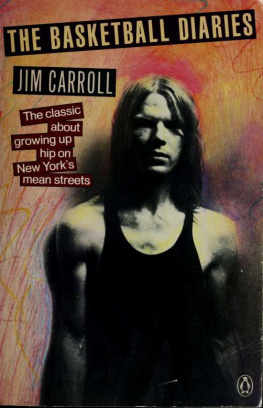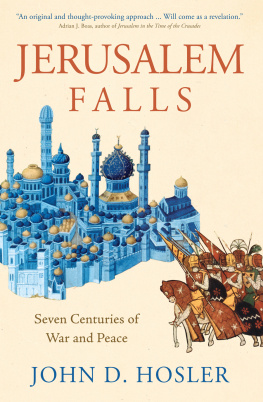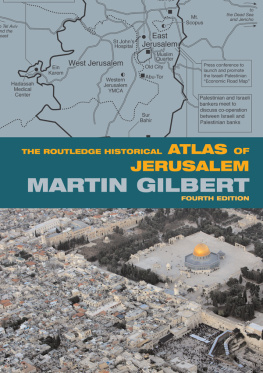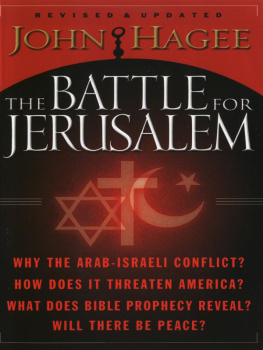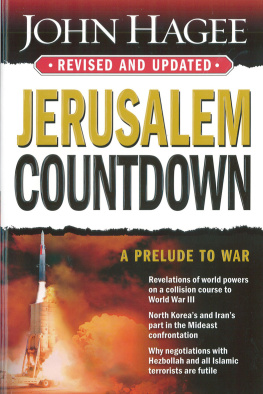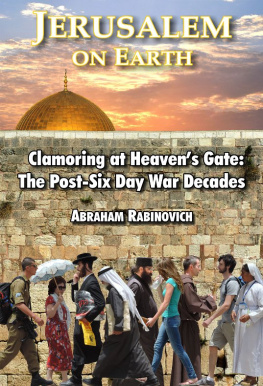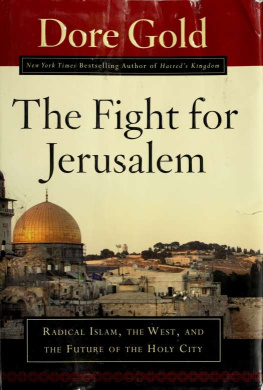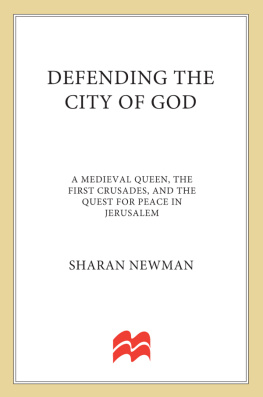Copyright 2011 by James Carroll
ALL RIGHTS RESERVED
For information about permission to reproduce selections from this book, write to Permissions, Houghton Mifflin Harcourt Publishing Company, 215 Park Avenue South, New York, New York 10003.
www.hmhco.com
The Library of Congress has cataloged the print edition as follows:
Carroll, James, date.
Jerusalem, Jerusalem: how the ancient city ignited our modern world / James Carroll.
p. cm.
Includes bibliographical references (p. )
ISBN 978-0-547-19561-2
1. JerusalemHistory. 2. JerusalemDescription and travel. 3. JerusalemReligion. 4. JerusalemEthnic relations. I. Title.
DS 109.9. C 367 2011
956.94'42dc222010043034
e ISBN 978-0-547-54905-7
v3.0915
The author gratefully acknowledges the use of material in the following books:
Judaism: Practice and Belief, 63BCE 66CE by E. P. Sanders. Copyright 1992 by E. P. Sanders. Reprinted with permission of the publisher, Continuum International Publishing Group. Violence and the Sacred by Ren Girard, translated by Patrick Gregory (pp. 46, 221). Copyright 1977 The Johns Hopkins University Press. Reprinted with permission of The Johns Hopkins University Press. The Iron Cage by Rashid Khalidi. Copyright 2006 by Rashid Khalidi. Reprinted by permission of Beacon Press, Boston.
For Dean James Parks Morton
and Rabbi David Hartman
and in memory of
Bishop Krister Stendahl
Oh, what a beautiful city,
Twelve gates to the city, hallelujah.
African-American spiritual
CHAPTER ONE
Introduction: Two Jerusalems
1. Heat
T HIS BOOK IS ABOUT the lethal feedback loop between the actual city of Jerusalem and the apocalyptic fantasy it inspires. It is a book, therefore, about two Jerusalems: the earthly and the heavenly, the mundane and the imagined. That doubleness shows up in the tension between Christian Jerusalem and Jewish Jerusalem, between European Jerusalem and Islamic Jerusalem, between Israeli Jerusalem and Palestinian Jerusalem, and between the City on a Hill and the Messiah nation that, beginning with John Winthrop, understands itself in its terms. But all recognizably contemporary conflicts have their buried foundations in the deep past, and this book will excavate them. Always, the story will curve back to the real place: the story of how humans living on the ridge about a third of the way between the Dead Sea and the Mediterranean have constantly been undermined by the overheated dreams of pilgrims who, age in and age out, arrive at the legendary gates with love in their hearts, the end of the world in their minds, and weapons in their hands.
It is as if the two Jerusalems rub against each other like stone against flint, generating the spark that ignites fire. There is the literal fire of wars among peoples and nations, taken to be holy because ignited in the holy city, and that will be our subject. There is the fire of the God who first appeared as a burning bush,
Jerusalem fever consists in the conviction that the fulfillment of history depends on the fateful transformation of the earthly Jerusalem into a screen onto which overpowering millennial fantasies can be projected. This end of history is conceived variously as the arrival of the Messiah, or his return; as the climactic final battle at Armageddon, with the forces of angels vanquishing those of Satan (usually represented by Christians as Jews, Muslims, or other infidels). Later, the end of history sheds its religiosity, but Jerusalem remains at least implicitly the backdrop onto which millennial images are thrown by social utopias, whether founded by pilgrims in the New World, by communards in Europe, or by Communists. Ultimately, a continuous twentieth- and twenty-first-century war against evil turns out, surprisingly, to be centered on Jerusalem, a pivot point of both the Cold War and the War on Terror. Having begun as the ancient city of Apocalypse, it became the magnetic pole of Western history, doing more to create the modern world than any other city. Only Jerusalemnot Athens, Rome, or Paris; not Moscow or London; not Istanbul, Damascus, or Cairo; not El Dorado or the New York of immigrants dreamsonly Jerusalem occupies such a transcendent place in the imagination. It is the earthly reflection of heavenbut heaven, it turns out, casts a shadow.
Thus, across the centuries, the fancied city creates the actual city, and vice versa. The more exalted the metaphoric status of Jerusalem, as the Jerusalem scholar Sidra DeKoven Ezrahi writes, the more dwarfed its geopolitical dimensions; the more expansive the boundaries of the Holy City, the less negotiable its municipal borders. This book will tell the story of those warshow sacred geography creates battlefields. Even when wars had nothing literally to do with Jerusalem, the city inspired them with the promise of the glory of the coming of the Lord... with his terrible swift sword, as put by one battle hymn from far away. Metaphoric boundaries obliterate municipal borders, with disputes about the latter spawning expansions of the former, even to distant reaches of the earth.
Jerusalem fever infects religious groups, certainly the three monotheisms that claim the city. Although mainly a Christian epic, its verses rhyme with what Judeans once did, what Muslims took to, what a secular culture unknowingly pursues, and what parties to the citys contemporary conflict embody. Yet if Jerusalem is the fevers chosen niche, Jerusalem is also its antidote. Religion, likewise, is both a source of trouble and a way of vanquishing it. Religion, one sees in Jerusalem as nowhere else, is both the knife that cuts the vein and the force that keeps the knife from cutting. Each tradition enlivens the paradox uniquely, and that, too, is the story.
For Jews, Jerusalem, after the destruction of the Temple by the Babylonians and then the Romans, means that absence is the mode of Gods presence. First, the Holy of Holies in the rebuilt Temple of biblical times was deliberately kept vacantvacancy itself mythologized. Then, after the destruction by Rome, when the Temple was not rebuilt, the holy place was imagined in acts of Torah study and observance of the Law, with a return to Jerusalem constantly felt as coming next year. Throughout centuries of diaspora, the Jewish fantasy of Jerusalem kept communal cohesion intact, enabled survival of exile and oppression, and ultimately spawned Zionism.
For Christians, the most compelling fact of the faith is that Jesus is gone, present only through the projections of sacramentalism. But in the ecstasies of evangelical fervor, Jesus can still be felt as kneeling in the garden of Gethsemane, sweating blood for you. So Jerusalem lives as the locus of piety, for you can kneel there, too. The ultimate Christian vision of the futurethe Book of Revelationis centered in the city of the Lords suffering, but now that anguish redeems the very cosmos. Even in the act of salvation, the return of Jesus to Jerusalem is catastrophic.
Muslims came to Jerusalem as occupiers in 637, only five years after the death of Muhammad. That rapidity makes the point. The Prophets armies, sweeping up out of Arabia in an early manifestation of the cohesion generated by an Islamic feel for the Oneness of God, were also in hot pursuit of Jerusalem. Desert heat this time. The Muslims visceral grasp of the citys transcendent significance defined their first longingand their first true military campaign. Islam recognizes Gods nearness only in recitation, with chanted sounds of the Quran exquisite in their elusiveness and allusiveness both. Yet the Prophet left a footprint in Jerusalems stone that can be touched to this dayan approximate and singular sacrament. To Muslims, Jerusalem is simply Al Quds, the Holy.
Next page
